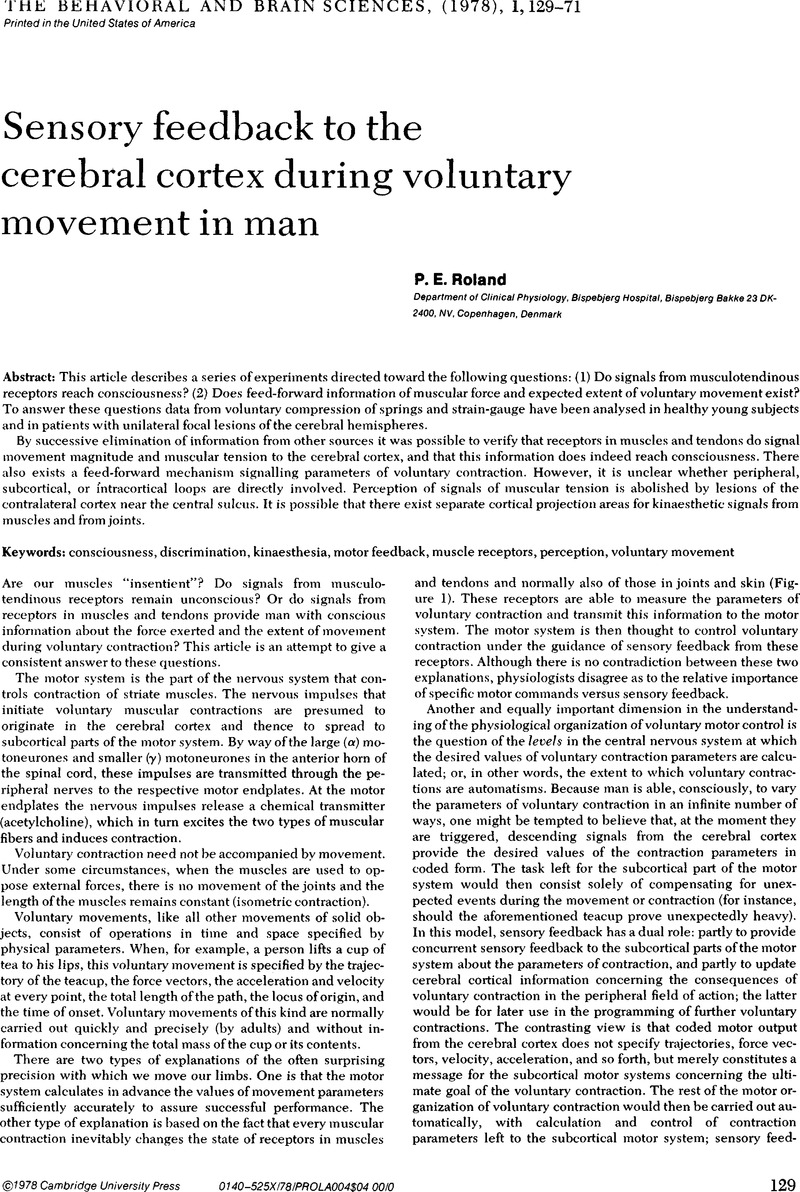No CrossRef data available.
Article contents
The interaction of motor and sensory signals in proprioception
Published online by Cambridge University Press: 04 February 2010
Abstract
An abstract is not available for this content so a preview has been provided. Please use the Get access link above for information on how to access this content.

- Type
- Open Peer Commentary
- Information
- Copyright
- Copyright © Cambridge University Press 1978
References
REFERENCES
Gandevia, S. C, and McCloskey, D. I.Sensations of heaviness. Brain. 100: 345–54. 1977.Google Scholar
Goodwin, G. M., McCloskey, D. I., and Matthews, P. B. C.The contribution of muscle afferents to kinaesthesia shown by vibration induced illusions of movement and by the effects of paralysing joint afferents. Brain. 95: 705–48.1972.Google Scholar
Holmes, G.The symptoms of acute cerebellar injuries due to gunshot injuries. Brain. 40: 461–85. 1917.Google Scholar
Mountcastle, V. B., Lynch, J. C, Georgopoulos, A., Sakata, H., and Acuna, C.Posterior parietal association cortex of monkey: Command functions for operations within extrapersonal space. Journal of Neurophysiology. 38: 871–908. 1975.Google Scholar
Oscarssohn, O., and Rosen, I.Projection to cerebral cortex of large muscle spindle afferents in forelimb nerves of cat. Journal of Physiology. 169: 924–45.1963.Google Scholar
Ruch, T. C, Fulton, J. F., and German, W. J.Sensory discrimination in monkey, chimpanzee and man after lesions of the parietal lobe. Arch. Neurol. Psych. 39: 919–38. 1938.Google Scholar
Stein, J. F.The effect of cooling parietal lobe areas 5 & 7 upon voluntary movement in awake rhesus monkeys. Journal of Physiology. 258: 62–63P. 1976.Google ScholarPubMed
Stein, J F. and Wattam-Bell, J.The effect of cooling N. interpositus cerebelli in rhesus monkeys on the tracking of a visual target. Journal of Physiology. 252: 47–48P. 1975.Google Scholar


